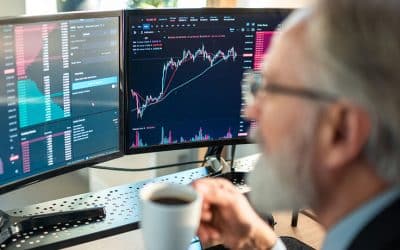How to invest 250,000 euros: key considerations from our experts at MAPFRE Gestión Patrimonial

Redacción Mapfre
“With great power comes great responsibility.” This well-known phrase, popularized by writer Stan Lee and immortalized in the Spider-Man universe, doesn’t just apply to superheroes—it also resonates strongly in the world of finance. Having significant assets, such as 250,000 euros, is undoubtedly a great opportunity... but also a huge responsibility. Especially for those obliged to decide what to do with that capital.
What should I invest in? Is it a good time for the market? Should I diversify? Questions arise quickly, and the answers are not always obvious. That's why having a clear strategy and expert advice makes all the difference. As Nicolás Rodríguez, Head of Business Development at MAPFRE Gestión Patrimonial, explains, all investment strategies are based on two initial premises: “The investor's profile and the purpose of the investment.”
Once the foundation is clear, Rodríguez points out that one of the most effective strategies for investing €250,000 is to opt for a profiled investment fund portfolio tailored to the level of risk the investor is willing to assume.
A profiled portfolio is a set of mutual funds or financial assets configured and managed professionally according to the risk profile and objectives of each investor. It allows for optimal diversification, combining fixed income, equities, and, where appropriate, other vehicles (alternative funds, monetary, etc.), where active management adjusts exposure to markets according to changing conditions and risk tolerance.
Whether choosing a discretionary management model or personalized financial advice, these portfolios allow for optimizing the risk-return balance over the medium to long term, thanks to the benefits of active management.
Fixed income vs. equities: the balance is in your profile
The percentage that must be allocated to fixed income or equities depends entirely on the investor's profile, which is determined through a suitability test. “The weighting between equities and fixed income will depend on the investor's degree of risk aversion, which is determined by their risk profile and which, in turn, is adjusted with a suitability test prior to investment,” Rodríguez explained.
There are standard combinations for different risk tolerance levels:
- Prudent profile: 25% Equity / 75% Fixed income
- Balanced profile: 40% Equity / 60% Fixed income
- Determined profile: 65% Equity / 35% Fixed income
- Risky investor: over 75% in Equities
The expert recalls that there is also room for other assets such as alternative funds or savings insurance, always within the limits allowed by the investor's profile.
Fewer funds does NOT mean less diversification
A common misconception among many investors is thinking that the larger the capital, the greater the number of funds in the portfolio should be. The reality is that diversification does not depend on the amount invested, but on a proper selection of assets. “The number of funds in a well-diversified portfolio should be the same for 50,000 euros, 250,000 euros, or 1,000,000 euros,” says Rodríguez.
In this regard, the expert emphasizes that the key is to have a well-constructed portfolio and, above all, access to quality financial advisory services.
The time horizon: key in the strategy
Having a well-defined time horizon (short, medium, or long term) is essential for structuring the investment correctly. In the long term, more risk can be assumed in exchange for higher potential returns. However, short-term needs must be covered with low-volatility assets, in order to preserve capital and guarantee liquidity.
The best advice? Don't leave it to chance
When asked for final advice for those with similar assets, the MAPFRE Gestión Patrimonial expert is clear: “Invest—money not invested is eroded by inflation.”
In addition, if you have 250,000 euros and don't know where to start investing, Rodríguez comments that the best decision you can make is to go to a financial expert. Not only will they help you avoid common mistakes, but they will also design a personalized strategy for you, taking into account your risk profile, your goals, and the investment horizon. In addition, a good expert offers emotional support, helping you make decisions with confidence and clarity.



